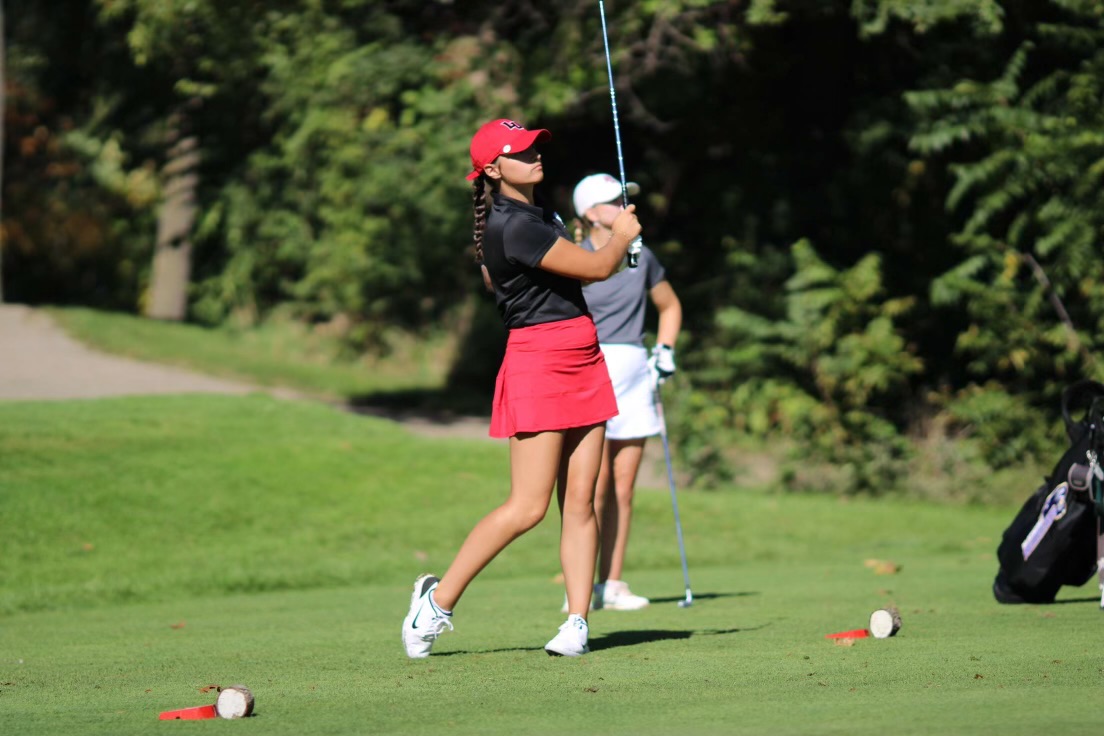
“It’s a sport for life,” said Hannah Higgins, a freshman double majoring in secondary education and history. She joined the Flyers golf team this past fall and has been playing the sport since she could remember. Higgins shared that golf is very technical but also friendly to all ages. As many do, her family has an affinity for the sport and she even said one of her favorite memories involved a tee-time. “Me and my dad, my two best friends and their dads flew down to Hilton Head and played golf for a weekend.” Her sport is also her vacation activity and a great way to bond with family and friends.
As universal as the sport is, few know the tiny technicalities that go into making a good player. Higgins went in depth about the importance of a good swing, which involves sharp focus, coordination, balance, sequence of movement and many others. Each detail comes together to build a good swing, which involves precise weight and pinpoint placement. Everything about it is meticulous.
Higgins explained, “The club face is not very big. If you hit [the ball] too low it won’t go as far but if you hit a wedge it will go way further than you want. Also if you hit behind it you won’t make good contact with it. The way you make contact with the ball is so important.” And that’s just for a drive. Each club, typically 12 in a set, has a different purpose, therefore calls for a unique approach. A putter, for example, is not going to need a club-over-the-head-type swing. Instead, the weight of the swing must be gentle yet forceful enough to just guide it to the hole.
To master this skill, it is encouraged that each athlete should have a swing coach. Higgins shared that this is someone separate from the head coach who works with an athlete individually and helps them master the details of their swing. However, she noted that this doesn’t mean the athlete fits a mold. It is quite the opposite. “Everyone has a different swing. [Everyone’s] body is different,” she explained.
This means that a swing coach not only has to teach technique, but must also understand each of their students on a deeper level in order to mold their swing around the way their body naturally moves. Higgins described how if one watched her swing and then watched one of her teammates swing, they would never look exactly the same. Each have good technique nonetheless.
Since a swing must be crafted to a player, then, an athlete must understand their unique weaknesses. Higgins shared hers saying, “I have a problem with flexibility so I rotate too much. I have to make sure I don’t over rotate.” Others might have different problems like “coming inside the ball or adding a loop to it.” A golfer must be fully aware of their strengths but also rise to correct their faults.
Although a swing is one of the most important factors in golf, game IQ and competitiveness are crucial as well. Higgins commented that one of the reasons she chose Lewis was the high level of the team’s high level of competition. It’s important that a golfer has the drive to continually get better, not only to improve their own scores, but by extension, the score of the team.
In other words, an athlete must have the work ethic to motivate themselves to address their individual flaws and practice each day to weed them out. At the same time, they must also have a spirit of camaraderie and care about how their play affects the team score. As Higgins put it, “it’s an individual team sport.”
The first time the Flyers take on the green is on March 16 in Georgetown, Kentucky.
Photo Credits: David Bork
